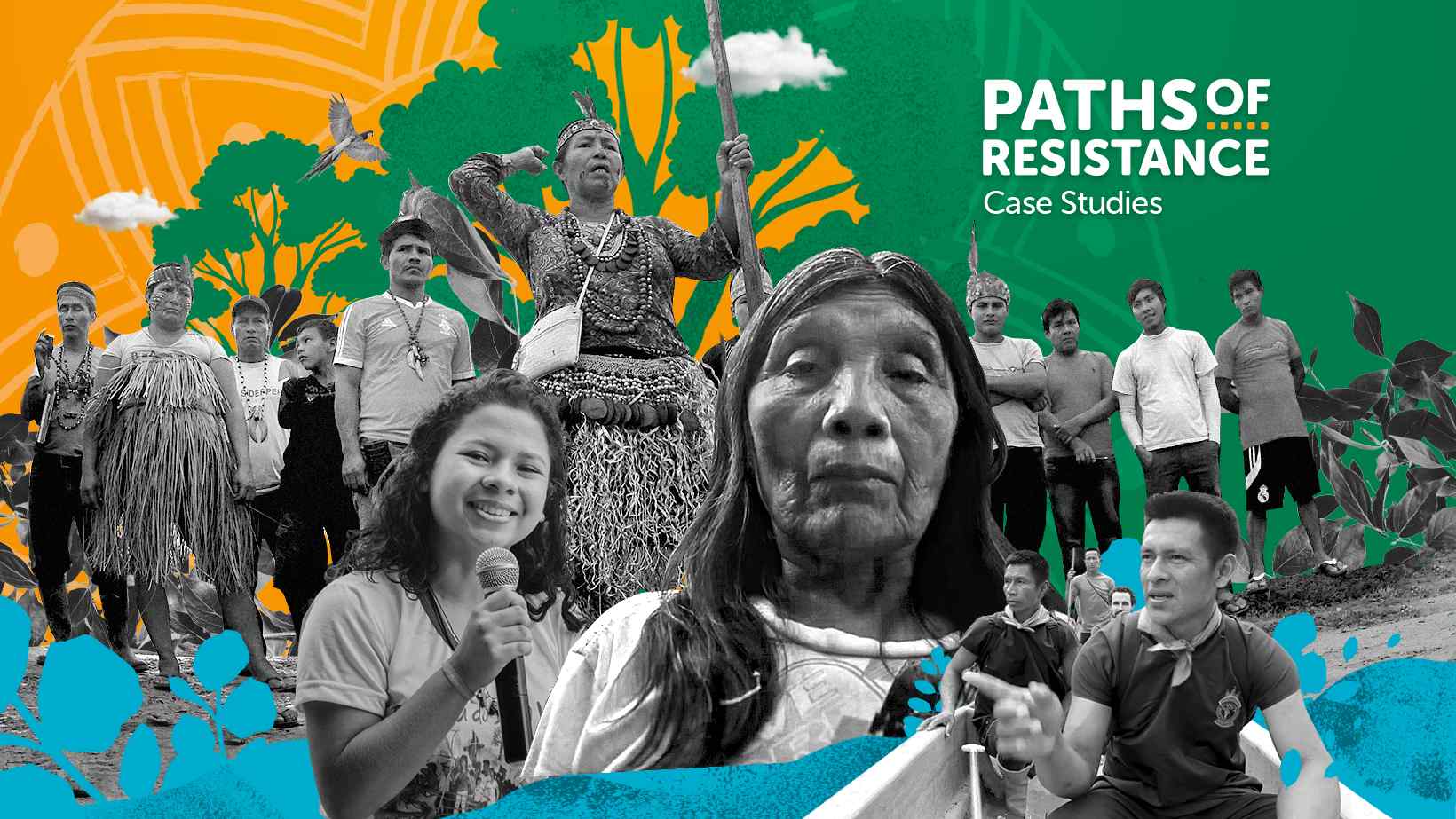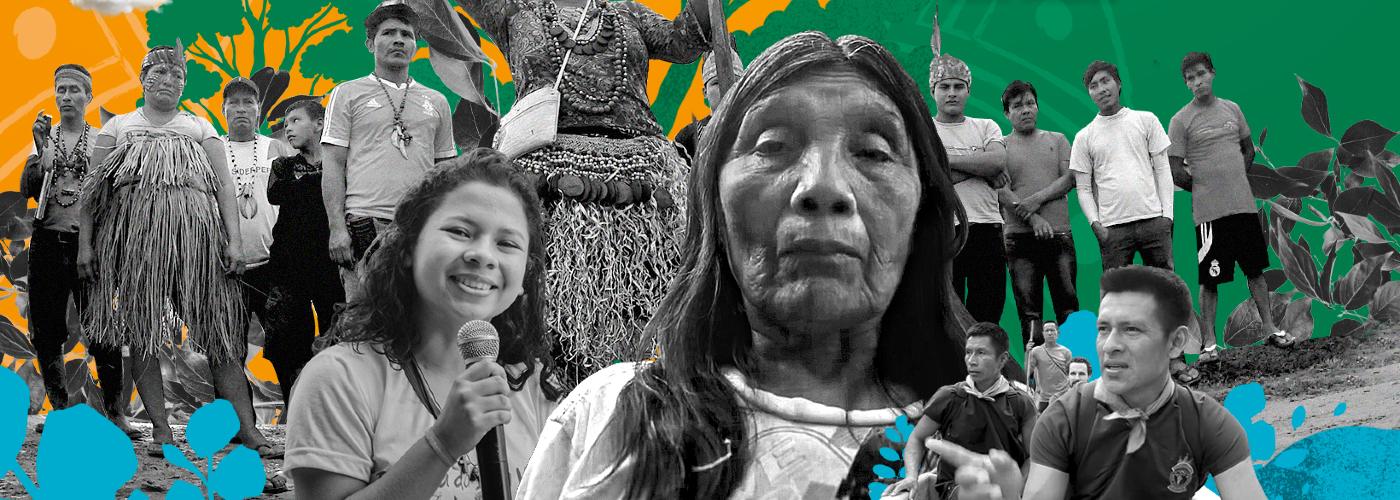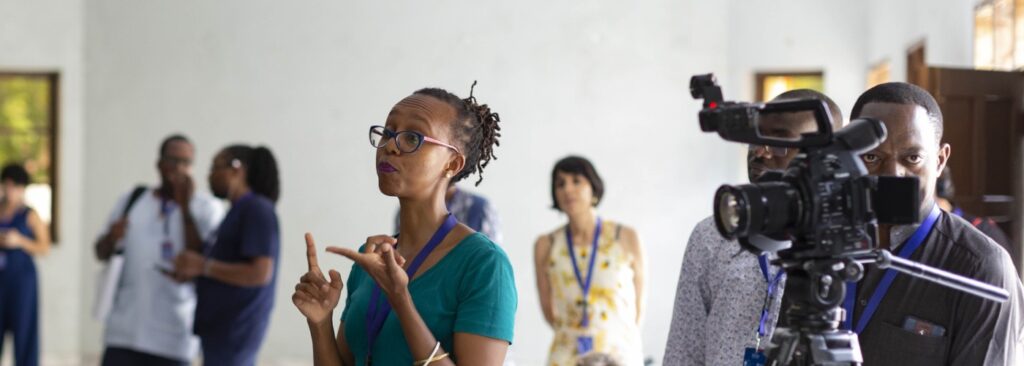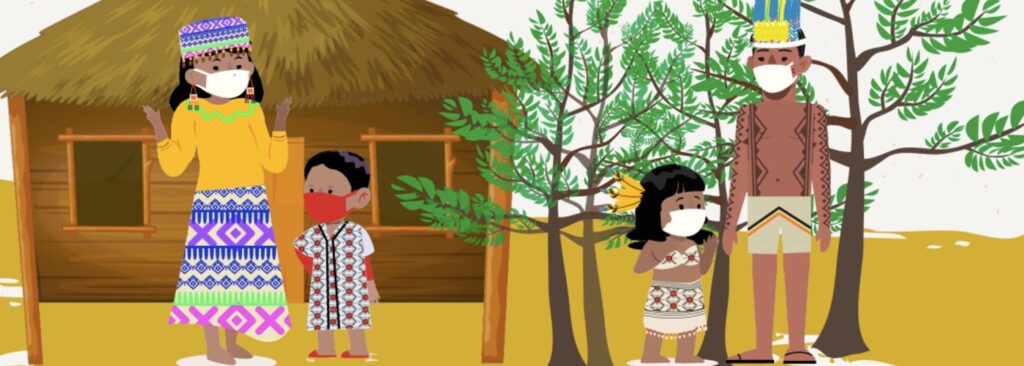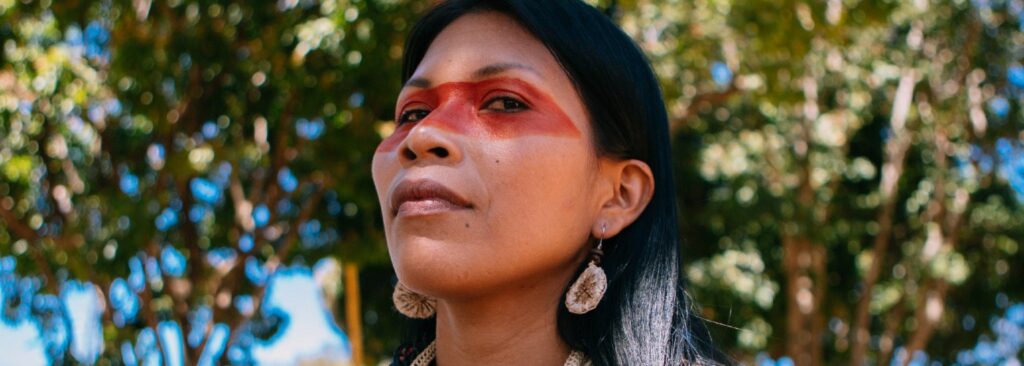Every year on August 9 the world celebrates the International Day of the World’s Indigenous Peoples. As part of this celebration, we are highlighting the crucial role that Indigenous communities play in protecting the Amazon rainforest. Their role of defenders is now even more important because the rainforest is actually emitting more carbon than it absorbs.
Most of the emissions are caused by massive fires, many deliberately set to clear land for beef and soy production. Add to this non-stop deforestation, land grabs for logging, and mining and oil extraction. These multiple threats are putting the very survival of the Amazon – and its support of the worldwide ecosystem – at risk. At the same time, these threats harm and sometimes even eliminate the Indigenous communities that call the rainforest home.
Guardians of the forest and their path of resistance
To fend off attacks on their lands, Indigenous guardians of the forest have targeted extractive companies, illegal loggers, land grabbers, and governments that refuse to protect Indigenous (land) rights. Using strategies like community organizing, monitoring systems, strategic alliances, training, political advocacy, and public campaigns, they have created a much-needed path of resistance.
Through the All Eyes on the Amazon program, local civil society organizations together with Hivos, Greenpeace, and other program partners, have produced a series of case studies that capture some of these “Paths of Resistance.” An interactive map thoroughly describes actual cases of actions led by Indigenous organizations to safeguard their lands.
Sinangoe Community lawsuits
The case about the Sinangoe Community in the Ecuadorian Amazon, where the A’i Kofán Indigenous People live, shows how they resist against corporations (and their enablers in the Ecuadorian government) by using a combination of ancestral knowledge and technology. In a territory of mostly virgin forest, the A’i Kofan have met the constant invasion of miners, loggers, hunters, illegal fishermen, and other extractive activities, with a series of lawsuits that ended in a landmark court ruling in favor of the Sinangoe Community. This set a historic precedent in Ecuador: Indigenous People defending their rights and freeing more than 32,000 hectares of primary forest from the devastating impact of gold mining.
Karipuna People
Between 1988 and 2018, more than 10,000 hectares of Amazon forest were deforested in the officially protected area in Rondônia, Brazil, where the Karipuna People live. Eighty percent of this deforestation occurred between 2015 and 2018. Yet the Karipuna fought back and managed to reduce the illegal deforestation of their territory by 62 percent. One thing they did was to gather hard evidence of illegal activities in their territory. The case study below shows you what else they have done to guarantee the protection of their lands.
All Eyes on the Amazon learning platform
We wanted to share these innovative and collaborative strategies so everyone can learn how to fight successfully against deforestation and degradation of the Amazon forest and how to better protect the rights of its inhabitants. So we have launched a learning platform, built in collaboration with our program partners. Here you can find out more about these struggles, share tools and resources, and learn best practices to protect the Amazon basin and its peoples.
Go to www.toamazonia.org, delve into the Amazon “Paths of Resistance” case studies, and find out what your contribution will be. Because there is only so much Amazon rainforest left, and the brave Indigenous guardians who live there and spearhead the resistance need reinforcements now.
